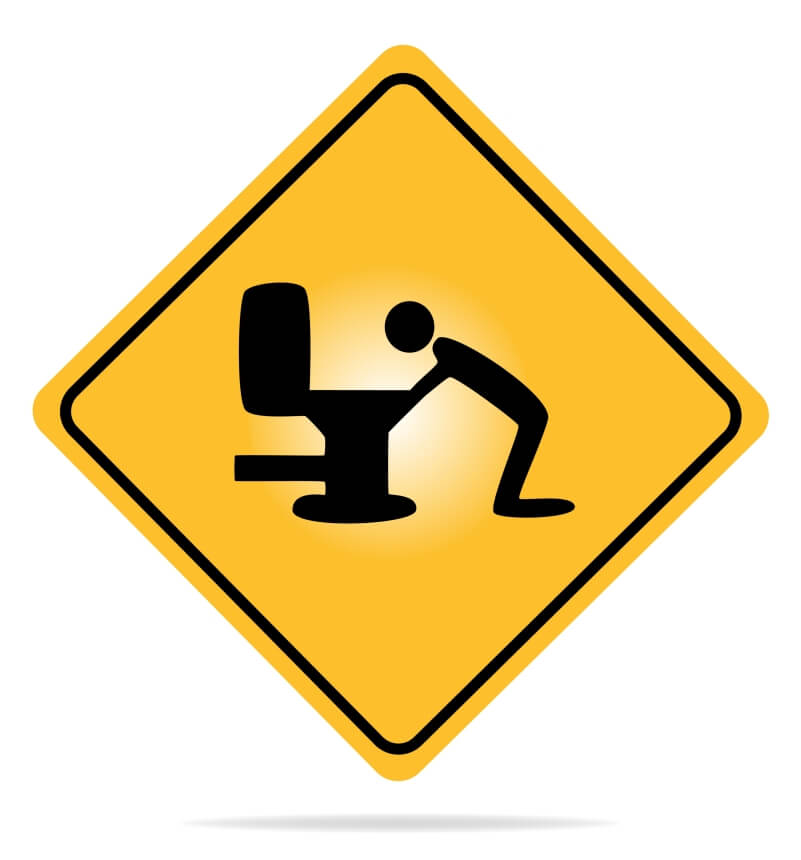
Alcohol Hangover Dangers in the Workplace
In today’s workplace an alarming number of employees show up to work under the influence of alcohol. An alcohol hangover can cause significant risks to the employee and other workers as well as slow down productivity, and raise injury claims.
The facts are startling. Alcohol is a contributing factor in 3 to 11 percent of all work related injuries in Australia.[1] In addition, alcohol and other illegal substances are the reason for a total of $2.9 million in productivity losses and absenteeism.[2]
When we look at the number of Australians who go to work with a hangover, the statistics are just as numbing. According to the Drug and Alcohol Services in South Australia, an estimated 4 percent of Australians go to work hung-over.[3]
Work Performance
Employees who come to work with a hangover are more accident prone than other workers. They are at a higher risk for making mistakes and their judgment is likely to be impaired. A hangover can lead to a lack of concentration. In many cases this is a contributing factor to on-the-job accidents.
Increased dependence of alcohol can lead to severe mental and health problems. These problems are often seen as contributing factors to poor work performance. Plus, they are sometimes linked to on-the-job drinking.
Sick Days
Heavy drinkers and casual drinkers are known to have more sick days. This can cost a company millions of dollars in the long run. Moreover, employees who have a history of coming to work with a hangover due to alcohol abuse normally change jobs frequently. Employee turnover cost a company money in terms of rehiring and retraining fees.
Do Employers Have Legal Obligations?
As an employer you have legal obligations under the Health and Safety in Employment Act 1992 (HSE Act) to make sure all employees in your company are provided a safe workplace.[4] There are steps you can take to make sure your workers are safe.
- Put a strict drug and alcohol policy into place at your company
- Enforce discipline
- Recognize problems and offer help such as counselling and treatment to employees who have alcohol and drug related problems
- Implement alcohol and drug education and training
In most cases the employee who comes to work with a hangover will eventually be discovered due to poor performance, missed days, or another work-related problem. Naturally, it’s better to discover the alcohol abuse before safety is compromised. If you have a monitoring system in place as a part of your overall substance abuse policy you can step into action and work with the employee to discuss treatment options.
If many cases, the employee may eventually return to work after counselling and treatment. You will want, for the safety of other employees and your company, to follow up with screenings and monitoring. The returning employee will also be included in the company-wide random drug and alcohol testing program.
With the prevalence of employees attending work with an alcohol hangover and the dangers it can cause, it is important to take a proactive approach to alcohol testing. It is critical for all employers to implement a drug and alcohol policy now for worker safety and to educate employees on the dangers of substance abuse in the workplace.
References
[1] Alcohol and Other Drugs in the Workplace. (n.d.). Retrieved from Drug and Alcohol Services South Australia: http://www.dassa.sa.gov.au/site/page.cfm?u=153
[2] Ibid
[3] Ibid
[4] Alcohol and the Workplace. (n.d.). Retrieved from Institute of Alcohol Studies: http://www.ias.org.uk/resources/factsheets/workplace.pdf
Categories
Archive
- February 2022
- October 2021
- June 2021
- November 2020
- October 2020
- June 2020
- March 2020
- February 2018
- December 2017
- August 2017
- February 2017
- September 2016
- August 2016
- October 2013
- September 2013
- July 2013
- May 2013
- February 2013
- December 2012
- November 2012
- August 2012
- June 2012
- February 2012
- December 2011
- October 2010
